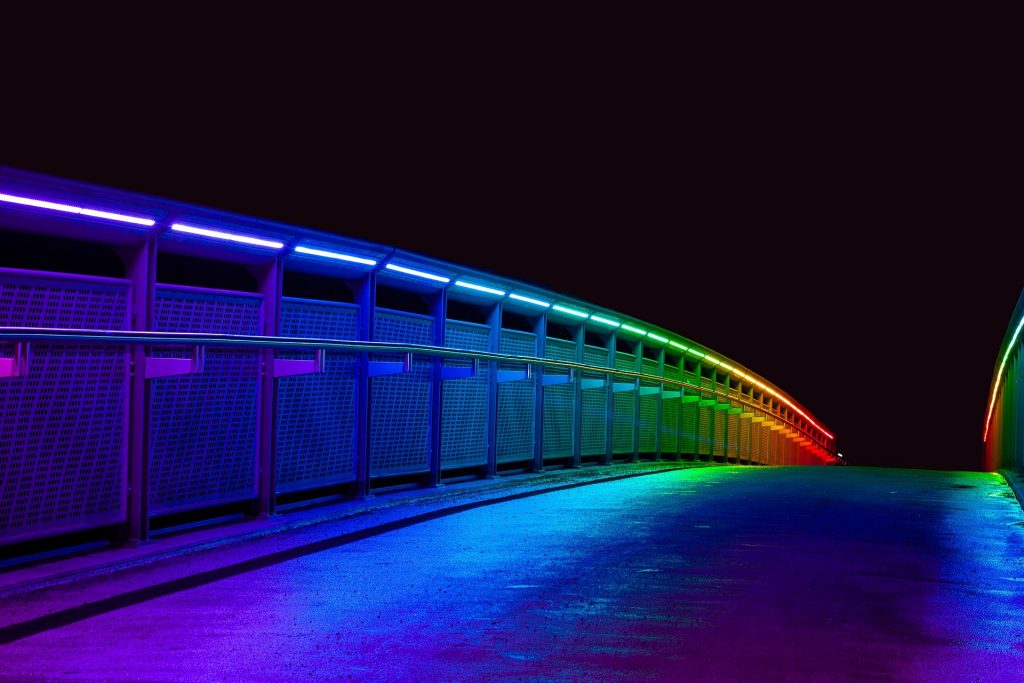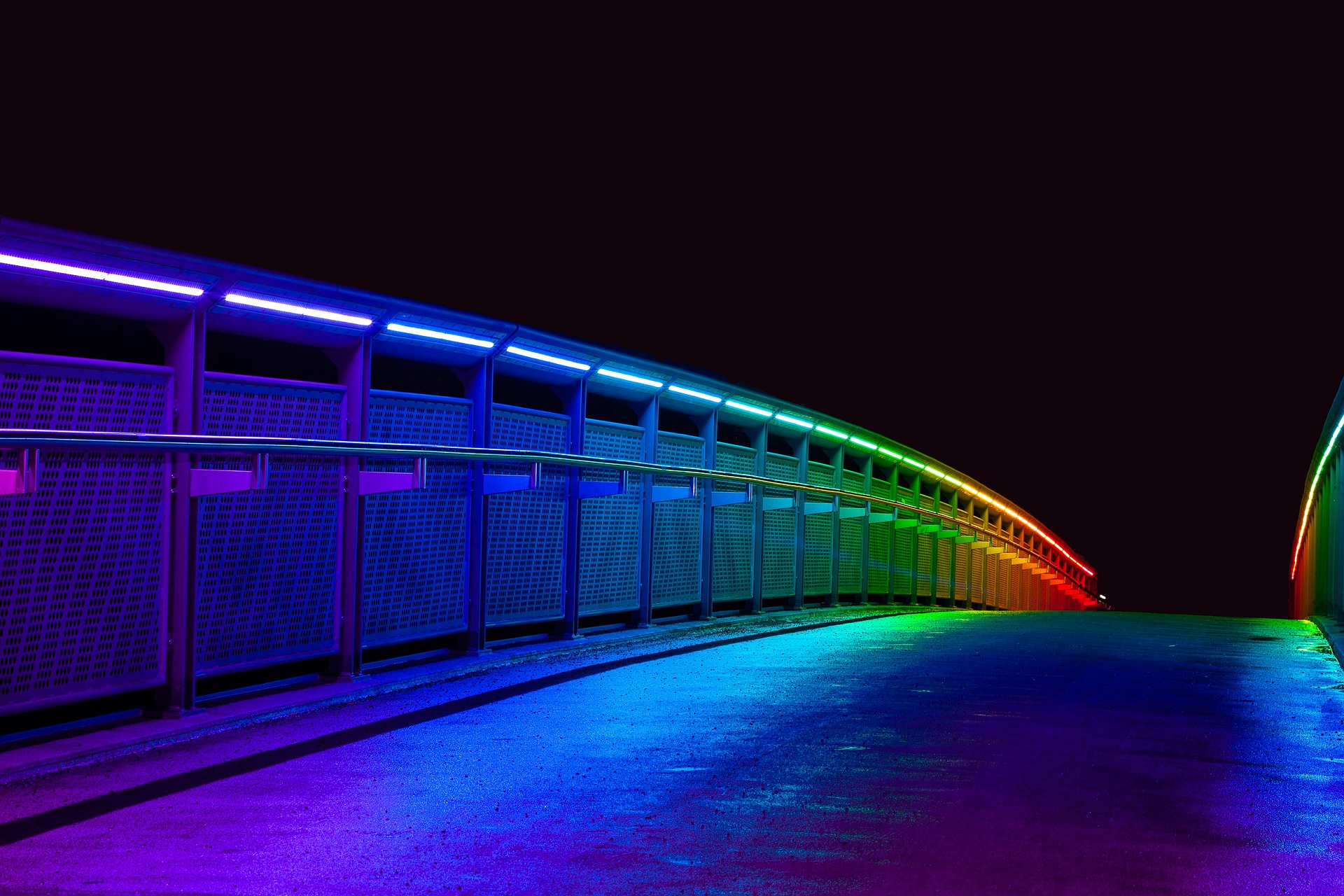LED stands for “Light Emitting Diode”. It is a semiconductor device that emits light when an electric current is passed through it. LEDs are commonly used as indicator lights in electronic devices, but they are also increasingly being used as light sources in a variety of applications such as lighting for homes, buildings, vehicles and of course drone light shows!
LEDs are energy-efficient, long-lasting, and durable. They also offer greater design flexibility and can be made in a variety of shapes, sizes, and colors. LED lighting has become increasingly popular in recent years as the technology has improved and the cost has decreased.
DroneSwarm use 6 colour LED technology vs the normal 3 colour RGB (red, green, blue) used by other drones.
How does an RGB LED work?
An RGB LED can make all colours by emitting different combinations of red, green, and blue light. These three primary colours of light can be combined in varying intensities to create a wide range of colours that the human eye can perceive.
The intensity of each color can be controlled using a microcontroller or other circuitry that adjusts the voltage applied to each LED element. For example, to create yellow light, the red and green LEDs are illuminated simultaneously with the green LED emitting more light than the red LED. Similarly, to create magenta light, the red and blue LEDs are illuminated with the red LED emitting more light than the blue LED. By varying the intensities of the three primary colors in different ways, an RGB LED can produce a vast range of colors.
It’s important to note that RGB LEDs can produce a wide range of colours, but they cannot produce all possible colours. The range of colours that an RGB LED can produce is limited by the colour gamut of the device, which is determined by the spectral characteristics of the red, green, and blue LEDs used in the device.
Why do we use 6 colour LED?
6-color LEDs, have an additional white LED compared to traditional RGB LEDs. This means that in addition to being able to produce millions of colours by mixing red, green, and blue light, 6-color LEDs can also produce a wider range of pastel and more subtle colours by mixing in white.
The additional white LED can also provide better colour accuracy and brightness, especially in the warmer colour temperatures. In addition, the white LED can be used to provide pure white light without the need to mix RGB colours, which can sometimes result in a slightly off-white or tinted colour.
Overall, 6-color LEDs can provide a wider range of colours and better colour accuracy compared to traditional RGB LEDs, making them suitable for applications where colour quality is important, such as in stage lighting, film production, and architectural lighting. However, 6-color LEDs may also be more expensive and require more complex control systems compared to traditional RGB LEDs.




Comments are closed